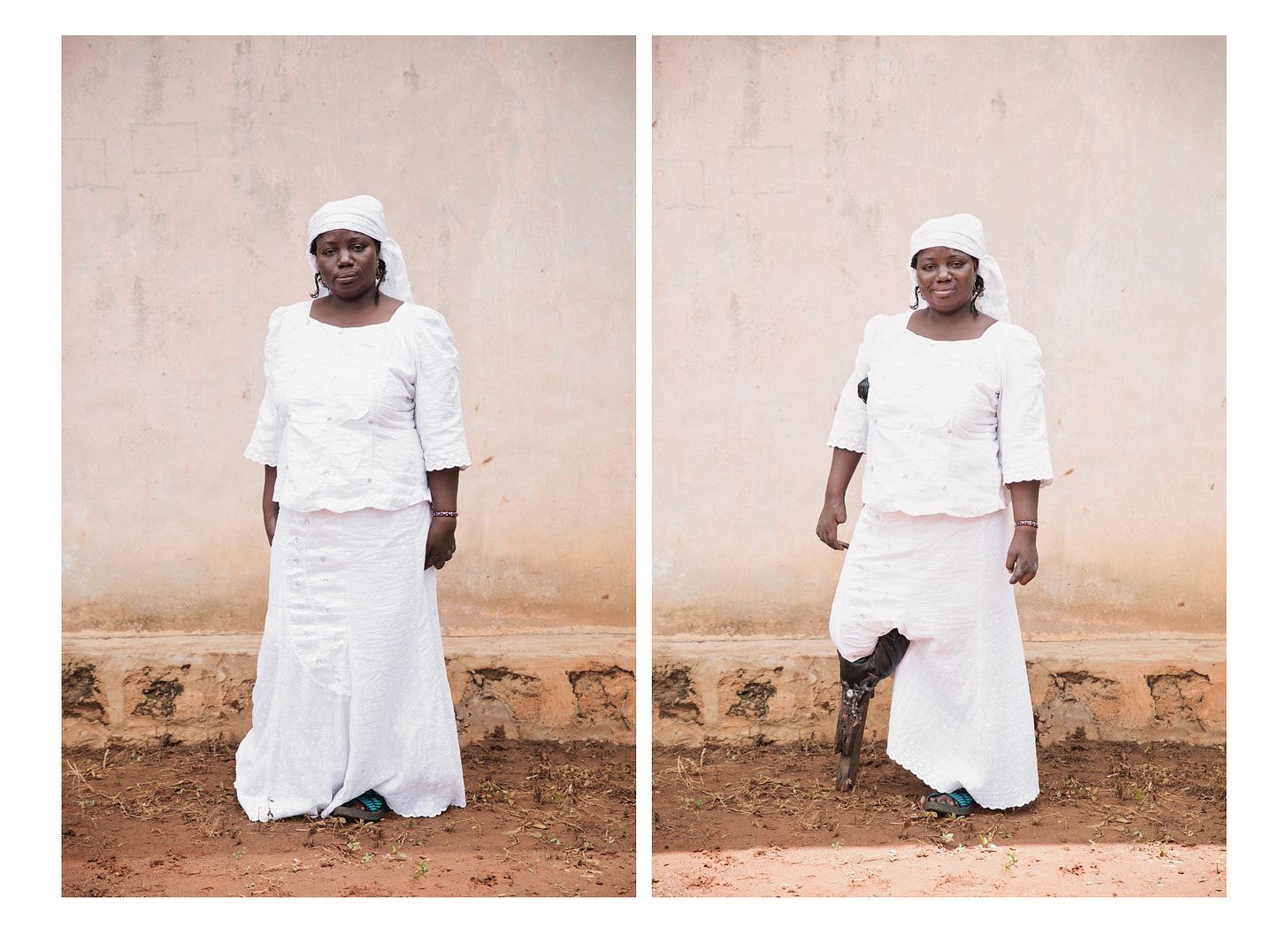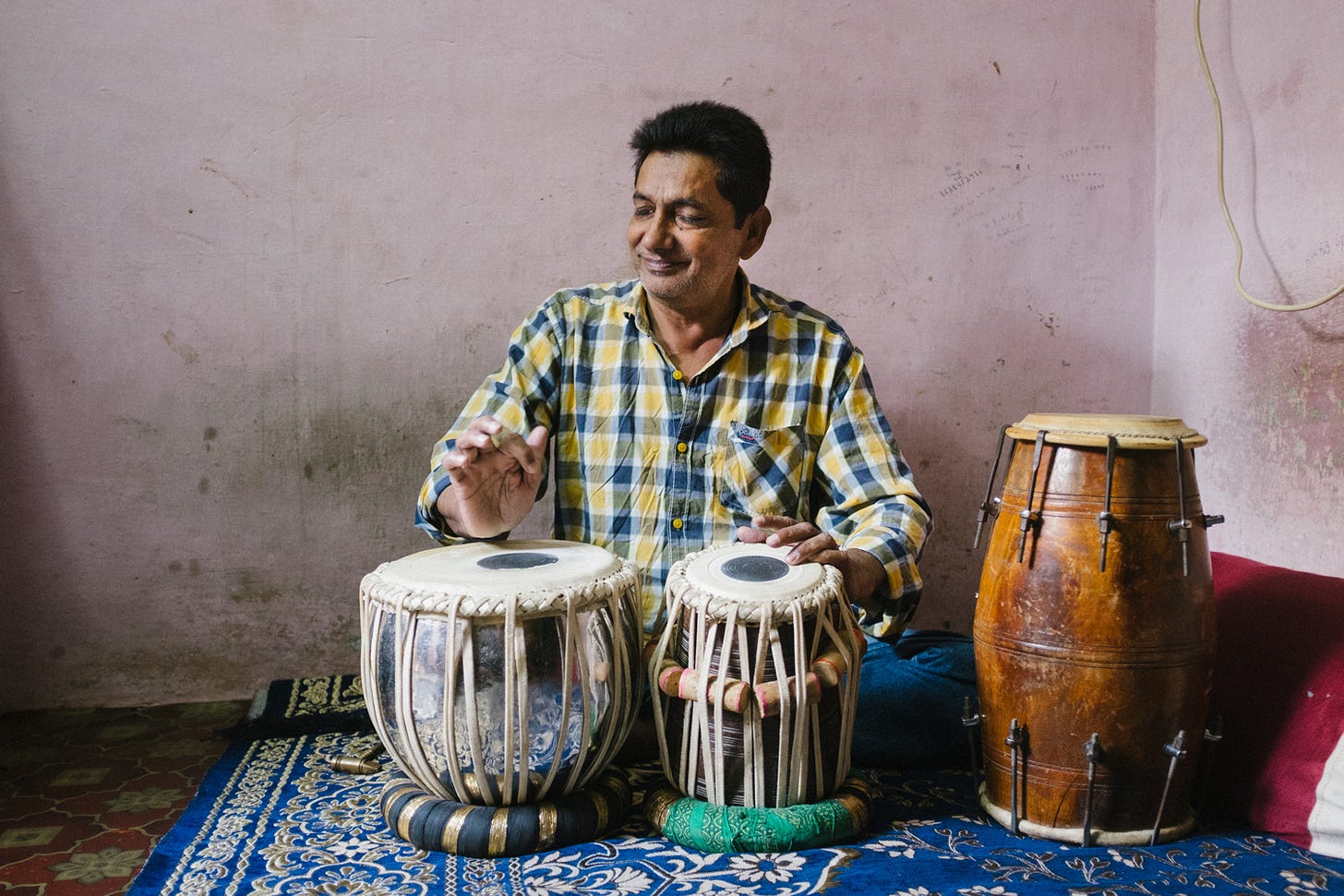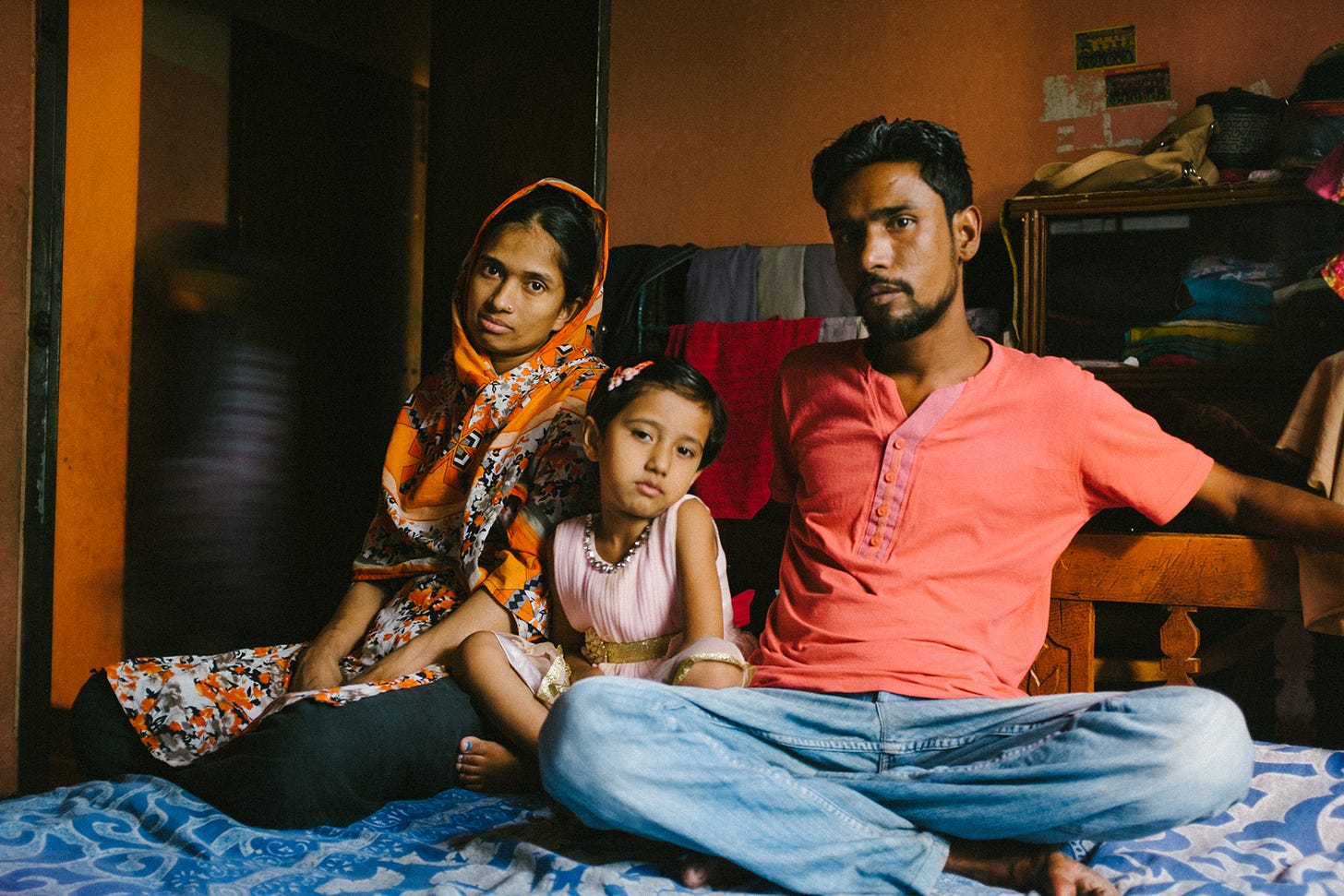Welcome to WorldWise, a newsletter to help discerning readers get truly global insight where current affairs meet humanity, written by Anita Makri.
This is the WorldWise View edition, featuring a guest practitioner.
👉🏽 The newsletter has been free to access since launch, and I’m trying to keep it that way! If you’d like to discuss sponsorship options click below or simply hit reply. You can also show your support by making a one-time donation, or inviting friends to subscribe.

“What is more common is what's called self-stigma.”
When I first met Tom Bradley and heard about his work, I was struck by how dedicated it was to leprosy—a neglected tropical disease that doesn’t exactly make the headlines. And when I saw some of his work, I realised this was someone trying to do something different from what you normally see in development or global health documentary photography. There’s a fine-art sensibility to the images, a different aesthetic.
On the occasion of World Leprosy Day, which was observed last Sunday, this conversation with Bradley, who is by now a friend, gives an insight into his work and an overlooked disease that is still a reality for people in some of the poorest parts of the world—but whose imagery is largely outdated. The photographer is working with the New Face for Leprosy project, which aims to find better ways to photograph and represent those affected by leprosy.

AM: How did you come to focus on leprosy with your work?
TB: I don't want to say it's a personal story. But it wasn't a conscious decision. I went to Lalgadh leprosy hospital in Nepal in early 2009, because I wanted to photograph something completely different. When I was there, I met now retired podiatrist Dr. Hugh Cross, who was a consultant for various NGOs in the region, and had lived in Philippines and Nepal for a good deal of his life. He persuaded me that this was something worth exploring. On top of that, I had six weeks at this hospital and spoke to other doctors, nurses, some of the patients affected by leprosy. That intrigued me, and I thought maybe I could photograph this for a couple of years.
But then I gradually realised that leprosy, in many ways, represents poverty. There's almost a metaphor there. It's not clear-cut, but [leprosy] tends to be present in a lot of the poorest regions of the world. It tends to be with people that have poor health care and sanitary conditions, people struggling with money. And so for me, it became a very specific thing to concentrate on that maybe represented a larger problem.
You've documented people and projects in about 13 countries since then. Do you see more or less the same stories?
I think I've interviewed well over 1000 people. And you do see patterns that cross cultural barriers. Because [of] the effects that [leprosy] has, physically, causing anaesthesia mainly in hands and feet, you see the sorts of problems there that are going to be universal. Things like writing in schools—if you get it when you're young, and you can't hold a pen properly, and the education system around you is not particularly able to support those with some sort of disability, for want of a better word. Then you'll see those same stories of being excluded from education at a young age.
Stigma, which is a word that's always used with leprosy, is an interesting one because people think of it as being excluded from a community from family—and that does happen, but I haven't found it to be as common as maybe NGOs might make out. What is more common is what's called self-stigma: the sort of confidence drop that’s synonymous with getting a disease that can be quite debilitating. And that is [linked to] a variety of issues, some of which are cultural.
Was there anything that you saw which was unexpected?
I think self-stigma, and how serious that was. There have been things that surprised me, which I’m now no longer surprised at. If you go to a [leprosy] colony with lots of people that are quite old, in their 70s [or] 80s, that have had the disease since way before multi-drug therapy, which came to be in the mid-80s, they will have some quite serious late effects of leprosy. A collapsed nose; eyes that they can't close, and so they're blind often; no fingers or toes. I'm told that you don't see that anymore. But I have found that in countries where the leprosy programme has been neglected—so Republic of Congo, parts of Liberia—even in areas where these things are generally well addressed like in South Asia and Nepal and Bangladesh and India, you still see these really serious cases.
What is a leprosy colony?
It's an area, a village for people affected by leprosy for them to live away from society, where they don't interact with other people. It used to be much more [common] but there's still colonies now that are functional. Lots of organisations are trying to disband them, and reintegrate those affected by leprosy in society. But the reality is that a lot of colonies are near hospitals, and people have recurring ulcers, [they] are fed up of travelling long distances—and if they have to do that, the ulcers on their foot are going to get worse. And so they end up looking for colonies, especially if those colonies are supported by the hospital in part or by a charity in some way.
Is there a story or a person that has stuck with you over the years?
There's lots that I could bring up, but one person who I consider a good friend is a young woman who's [of] similar age to me, called Tanya, who lives in Dhaka. She has a husband who is also affected by leprosy, and two children. I met her four years ago, almost, [while on] a commission. She's got both legs amputated below the knee, problems with her fingers, and with her husband money is one of the main issues they struggle with, especially when it comes to getting education for the now six-year old daughter, and trying to find work as well. I've stayed in touch with her—a good friend who's a trainee doctor in Bangladesh translates between us. We chat on Facebook quite a lot, and every now and then have a Zoom. There's not many people where there's a language barrier that I would call a friend, but Tanya is one of them. Seeing that receiving health and occasional hospital care, the sort of difference that makes and doesn't make, and how it's a really complicated situation, [including] her relationship with the NGO that does occasionally help her, has been quite eye opening.

You were talking earlier about the interviews that you do. Is that an integral part of how you work as a photographer?
I started doing interviews because you realise there's a limit to what photographs can say. I'm not spending huge amounts of time with people, even if it's a couple of weeks it's not a great deal of time. [And] of course, most of these interviews have been from commissions from NGOs, and they require stories as well. I also think generally people like to be heard and like to have their story told as much as I like to hear it. I think it's a really important part of the process. It gives me a better understanding of how to photograph them.
I'd love to include a lot of these stories alongside the images. I think they complement each other. It's quite important for those affected to have a voice in some way—and of course if you're the one taking a photograph, you are still controlling what they are saying in some way.
[At times] I asked them to write on photographs. They can write what they want after an interview.

What sorts of things do you pay attention to in terms of representation—how you depict someone affected by leprosy?
It's a complex thing to talk about. There's a responsibility that I've got, of representing them. And it can be quite difficult when it's a disease that is sometimes as graphic as leprosy. One tries to avoid cliches or stereotypes. Sometimes [images of the disease] can be quite an important part to show, but you try and do that in a way that shows who they are as humans. That might be showing some aspects of the physical deformity in the photo, but it not being the focus. Or it could be not showing it at all, and letting that being the story. There are things that over the years I've realised are really important in terms of representing others, and those things have been informed by—a little bit, probably not nearly as much as [they] should be—by the people who I've photographed. I'm a white British stranger visiting their country; you try and read things, and trust the people you’re with as well.
There's one one organisation called IDEA that's represented by people affected by leprosy—they're quite vocal about how this imagery is shown. And I've recently got involved with something called The New Face for Leprosy project, which was an idea from two leprosy doctors: Dr. Diana Lockwood, who's British, and Dr Saba Lambert, who is based in Ethiopia. They thought it would be nice to start a project which shows quite positive images of those affected by leprosy, and trying to push a movement so that when you Google Image-search leprosy, the representations aren't as terrifying—it comes up with stuff that's quite ancient. But it's also [something] you have to judge personally.
📸 Follow Tom Bradley’s leprosy work on Instagram + website/portfolio
A final note from the week’s soundtrack 🌎
WorldWise is an independent newsletter—thanks for your readership and support.
Thoughts to share, or something I missed? Hit reply or leave a comment.
Enjoying it? Share and invite others to subscribe, or just tap the heart button.
Want more global journalism? Get in touch to discuss sponsorship options.
📬 Find out more and subscribe | 🙏 Support on Ko-fi | 🔹 Follow on Twitter



